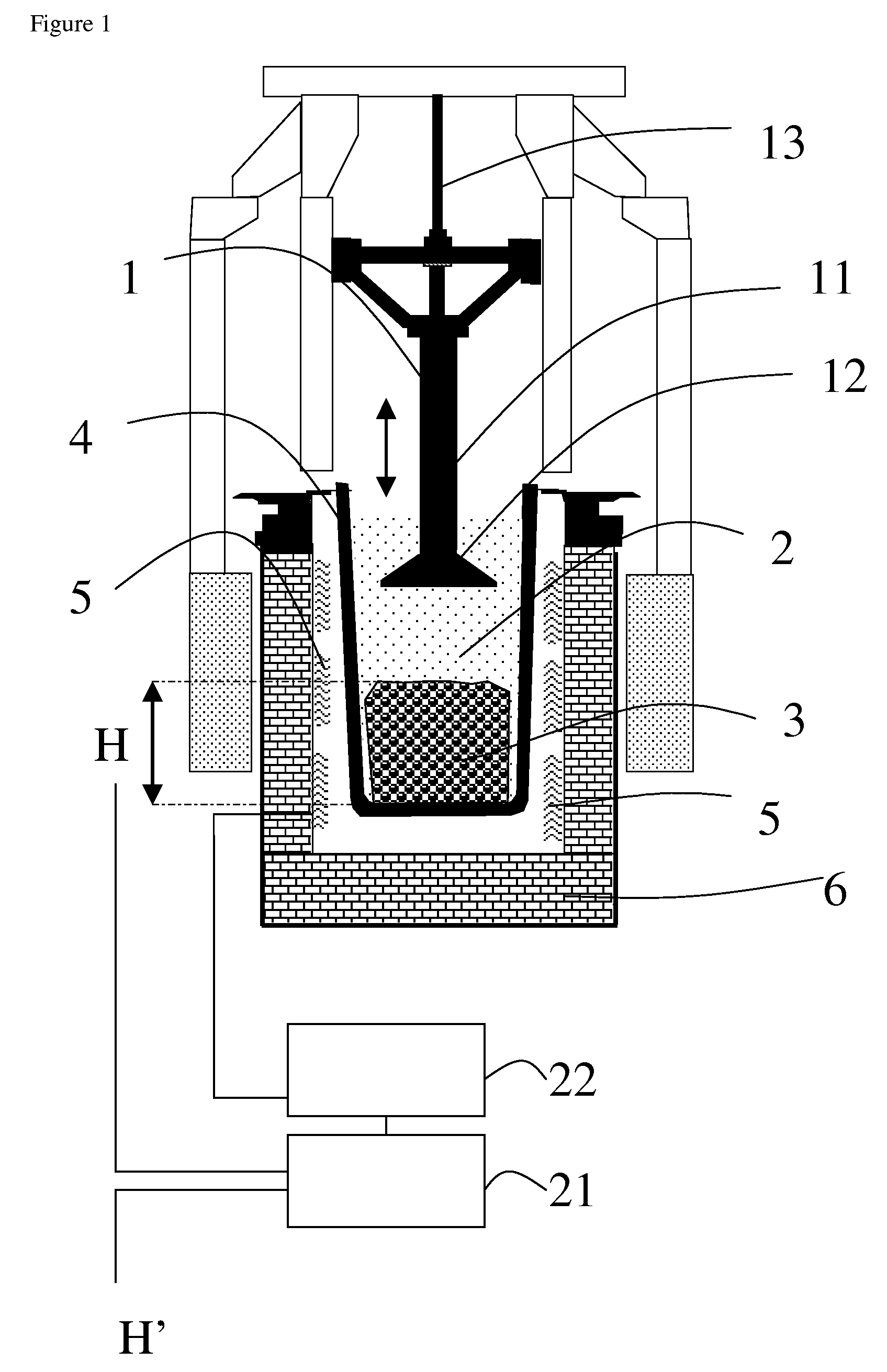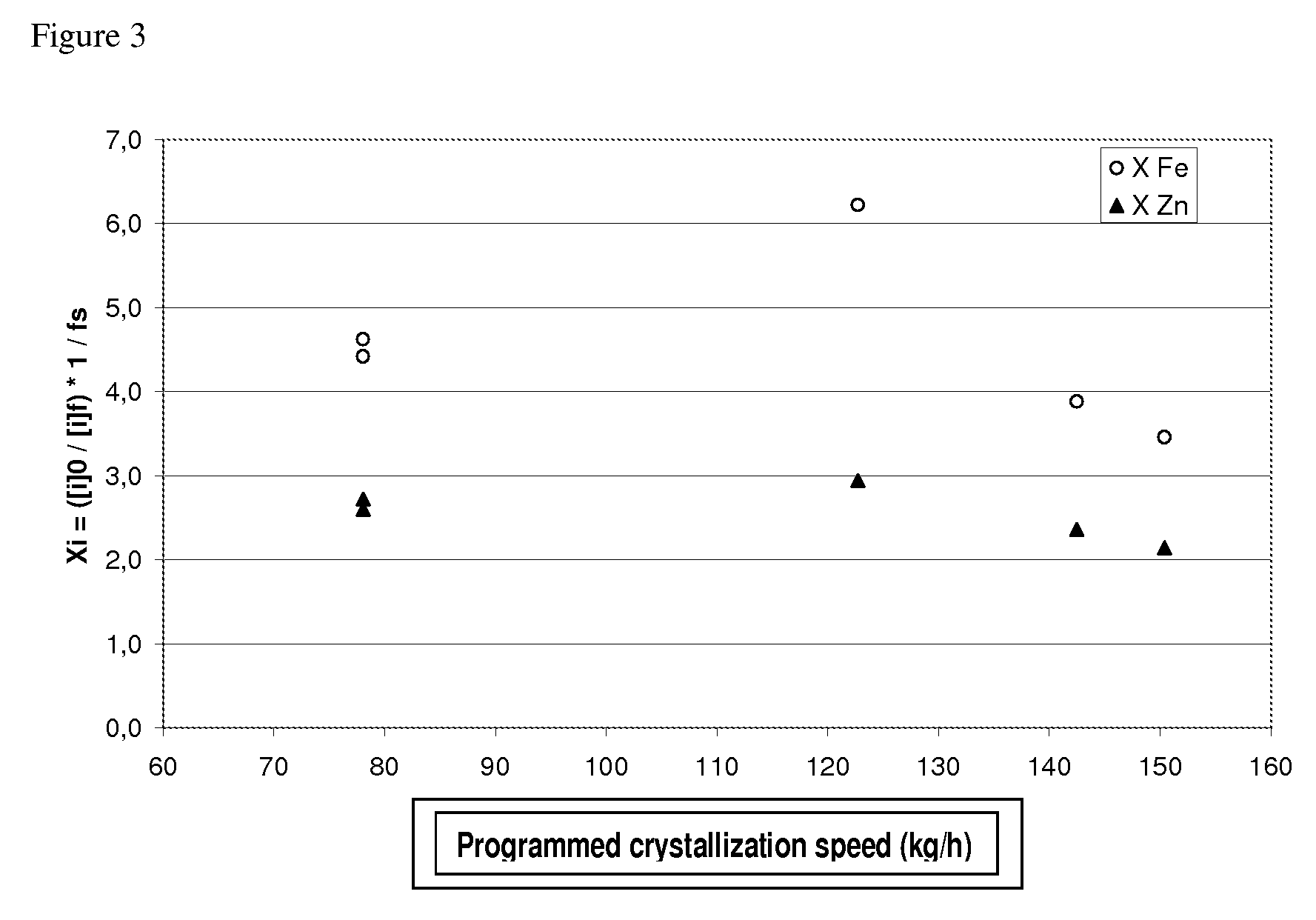Process for recycling aluminium alloy scrap coming from the aeronautical industry
a technology of aeronautical industry and scrap metal, which is applied in the field of aluminum alloy recycling, can solve the problems of difficult direct recycling of scrap, partial loss of metal value, and large amount of scrap generated by aircraft and space industries, and achieve the effect of facilitating recycling of series 7xxx
- Summary
- Abstract
- Description
- Claims
- Application Information
AI Technical Summary
Benefits of technology
Problems solved by technology
Method used
Image
Examples
example
[0076]In the various tests carried out, the following stages are involved:[0077]scrap alloy 7075 is collected[0078]a sufficient quantity of scrap is melted to feed a segregation device[0079]fractional crystallization, with a predetermined speed of crystal formation, is performed[0080]the residual impure liquid is drained off
[0081]The tests were carried out in furnaces designed for fractional crystallization similar to those described in patent FR2788283, provided with a device for controlling the crystallization speed. FIG. 1 illustrates the device used for the tests. The means of tamping makes it possible to measure the height H of crystals formed. A control loop acting on the heating power level is used to program the crystallization speed to a predetermined value.
[0082]The tests carried out are described in table 1.
TABLE 1parameters of the tests carried out.CrucibleCrucibleBloomProgrammedProgrammedProgrammeddiameterheightweightCrystallizationcrystallizationsolidifiedcrystallizati...
PUM
| Property | Measurement | Unit |
|---|---|---|
| Temperature | aaaaa | aaaaa |
| Temperature | aaaaa | aaaaa |
| Weight | aaaaa | aaaaa |
Abstract
Description
Claims
Application Information
 Login to View More
Login to View More - R&D
- Intellectual Property
- Life Sciences
- Materials
- Tech Scout
- Unparalleled Data Quality
- Higher Quality Content
- 60% Fewer Hallucinations
Browse by: Latest US Patents, China's latest patents, Technical Efficacy Thesaurus, Application Domain, Technology Topic, Popular Technical Reports.
© 2025 PatSnap. All rights reserved.Legal|Privacy policy|Modern Slavery Act Transparency Statement|Sitemap|About US| Contact US: help@patsnap.com



